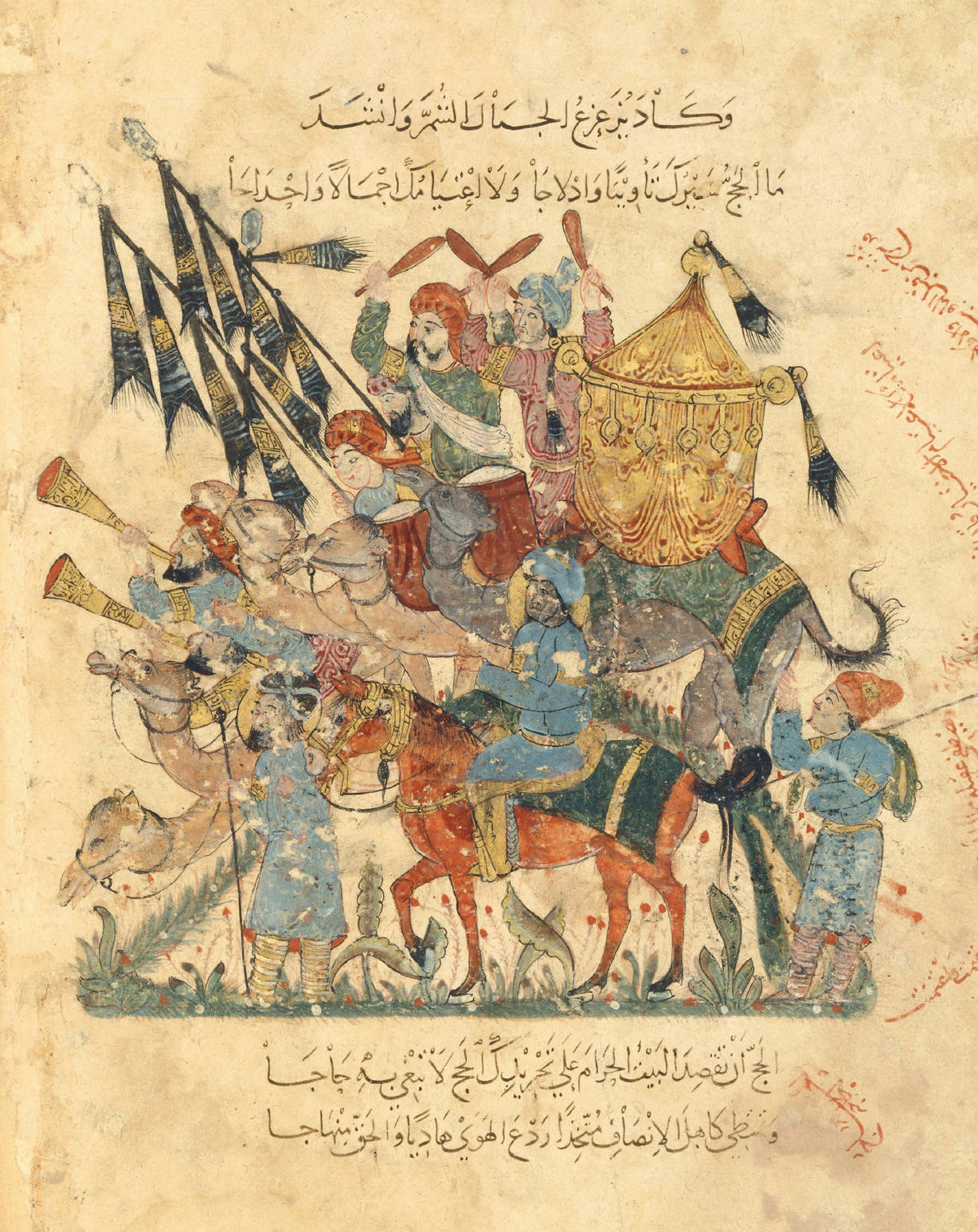Introduction
CHAPTER NINE
The Worlds of Islam
Afro-Eurasian Connections
600–1500

“There were tens of thousands of pilgrims, from all over the world. They were of all colors, from blue-eyed blondes to black-skinned Africans. But we were all participating in the same ritual, displaying a spirit of unity and brotherhood that my experiences in America had led me to believe never could exist between the white and non-white. . . . I have never before seen sincere and true brotherhood practiced by all colors together, irrespective of their color.”1 So said Malcolm X, the American black radical leader and convert to Islam, following his participation in the hajj, the Muslim pilgrimage to Mecca, in 1964. That experience persuaded him to abandon his earlier commitment to militant black separatism, for he was now convinced that racial barriers could indeed be overcome within the context of Islam.
As the twenty-first century dawned, Islam had acquired a noticeable presence in the United States, with more than 1,200 mosques and an estimated 8 million Muslims. Here was but one sign of the growing international significance of the Islamic world. Independence from colonial rule, the Iranian Revolution of 1979, repeated wars between Israel and its Arab neighbors, the rising price of oil—all of this focused global attention on the Islamic world in the second half of the twentieth century. Then in the new millennium, the 2001 attacks on the United States, American military action in Afghanistan and Iraq, and in 2011 the popular uprisings in the Middle East known as the Arab Spring as well as the killing of Osama bin Laden likewise signaled the growing role of Islamic civilization in world affairs.
AS IN CHINA, MUSLIM SOCIETIES OVER MUCH OF THE PAST CENTURY have been seeking to overcome several hundred years of humiliating European intrusion and to find their place in the modern world. In doing so, many Muslims have found inspiration and encouragement in the early history of their civilization and their faith. For a thousand years (roughly 600–1600), peoples claiming allegiance to Islam represented a highly successful, prosperous, and expansive civilization, encompassing parts of Africa, Europe, the Middle East, and Asia. While Chinese culture and Buddhism provided the cultural anchor for East Asia during the third-wave millennium and Christianity did the same for Europe, the realm of Islam touched on both of them and decisively shaped the history of the entire Afro-Eurasian world.
SEEKING THE MAIN POINT
In what ways did the civilization of Islam draw on other civilizations in the Afro-Eurasian world? And in what respects did it shape or transform those civilizations?
The significance of a burgeoning Islamic world during the third-wave era was enormous. It thrust the previously marginal and largely nomadic Arabs into a central role in world history, for it was among them and in their language that the newest of the world’s major religions was born. The sudden emergence and rapid spread of that religion in the seventh century C.E. was accompanied by the creation of a huge empire that stretched from Spain to India. Both within that empire and beyond it, a new and innovative civilization took shape, drawing on Arab, Persian, Turkish, Greco-Roman, South Asian, and African cultures. It was clearly the largest and most influential of the new third-wave civilizations. Finally, the broad reach of Islam generated many of the great cultural encounters of this age of accelerating connections, as Islamic civilization challenged and provoked Christendom, penetrated and was transformed by African cultures, and also took root in India, Central Asia, and Southeast Asia. The spread of Islam continued in the modern era so that by the beginning of the twenty-first century, some 1.2 billion people, or 22 percent of the world’s population, identified as Muslims. It was second only to Christianity as the world’s most widely practiced religion, and it extended far beyond the Arab lands where it had originated.
A Map of Time
| 570–632 | Life of Muhammad |
| 632–661 | Era of Rightly Guided Caliphs |
| 633–644 | Muslim conquest of Persia |
| 650s | Quran compiled |
| 656–661; 680–692 | Civil war; emergence of Sunni/Shi’a split |
| 661–750 | Umayyad caliphate |
| 750–900 | High point of Abbasid caliphate |
| 711–718 | Conquest of Spain |
| 751 | Battle of Talas River |
| 756 | Baghdad established as capital of Abbasid Caliphate |
| 800–1000 | Emergence of Sufism |
| 1099 | Crusaders seize Jerusalem |
| 1206 | Delhi sultanate established in India |
| 1258 | Mongols sack Baghdad; formal end of Abbasid caliphate |
| 1324 | Mansa Musa pilgrimage to Mecca |
| 1453 | Ottoman Empire conquers Constantinople; end of Byzantine Empire |
| 1492 | Christian reconquest of Spain complete; end of Muslim Spain |
| 1526 | Mughal Empire established in India |